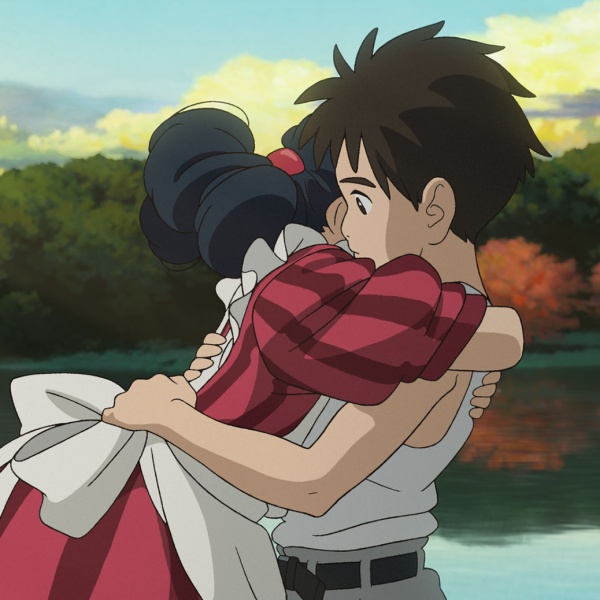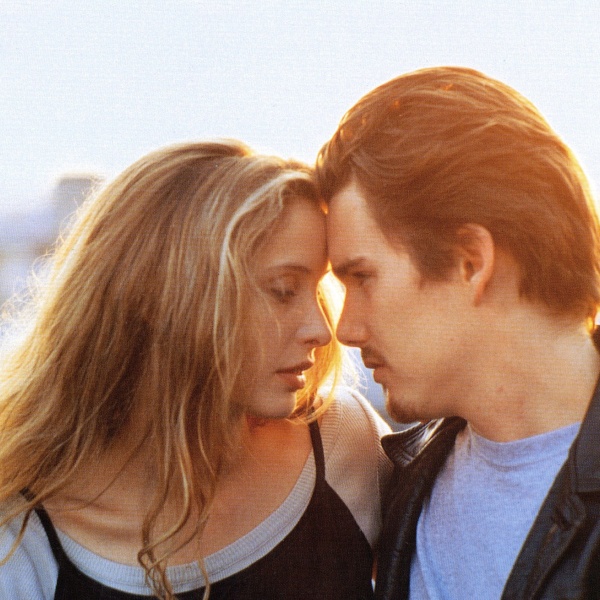
I was pleased to find that, as Playlist writers, we were encouraged to publish our own 10 best lists for 2010. We often have differing opinions, and how could we not? More importantly, we change with the times, particularly through the prism of a year at the movies — a challenging, cerebral independent film that haunted us one afternoon in June could just be an afterthought as winter approaches, the time spent allowing us to emotionally gravitate in different directions. The themes and ideas behind the films we consume have the power to assist us in recontextualizing, rebuilding our lives and understanding something more about ourselves. The best films of the year, in other words, should be films that made us better people, and what’s good for one Playlist scribe may not be good for another
With that, a look back at 2010.
HONORABLE MENTION: “Rabbit Hole,” “Leaves of Grass,” “The Illusionist,” “Trash Humpers,” “Bluebeard” and “Let Me In.” Special jury prize to “Machete” for Excellence In Trejo-ocity.
10. “The Fighter”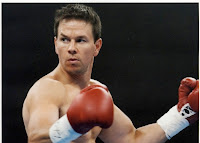
Who expected David O. Russell, the ferocious experimenter behind Gulf War comedy “Three Kings” and existential detective story “I Heart Huckabee’s,” would end up being an expert on family values? Some of the stronger comedic moments in “The Fighter” remind one of Russell’s own manic “Flirting with Disaster,” a mid-90’s screwball comedy about a sexually-inept loner trying to find a sense of place by locating his true birth parents. “The Fighter” is almost a spiritual sequel to that film, where one family slowly realizes their sense of place is rotting the fruit of their labor, Mark Wahlberg’s Micky Ward paying the price with his career. “The Fighter” is the rare adult film where doing the right thing is never clear: is Micky’s true path training year round in Vegas, and how much does he owe his wayward family, each member clearly struggling to maintain what is already a lifestyle of tenuous capability in crack-ridden Lowell, Mass.? “The Fighter” should resonate with anyone who has experienced the crossroads where dedication to family meets mutual self-destruction.
9. “Inception”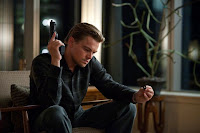
The one moment most people refer to in the trailer for “Inception” that sold them varies from person to person, but it’s very likely the shot of Joseph Gordon-Levitt taking flight within a hotel hallway, as if gravity itself was rejecting the notion of your average high-octane thriller. Usually, seeing shots like that dilute the final film experience, but when the moment arrived each time I saw “Inception” with an audience, you could feel the audience collectively gasping for air. What’s impressive about this dream state thriller is that Chris Nolan packed his film with traditional thrills (chase sequences, hand-to-hand combat, etc.). He then placed them within the framework of a cohesive story structure that, for once in a major Hollywood film, rewarded patience and understanding instead of holding them in contempt. And all at once, this blockbuster filmmaker was able to again use a major studio’s money to do what directors are expected to do, which is produce something exciting and contemporary, but also personal, and in “Inception,” the artist-as-dreamer is only one of an unusual surplus of potential readings for an $800 million movie.
8. “Another  Year”
Year”
In movies, you’re never forgotten, you’re always invited to the party, always asked out for a beer or a cup of coffee. In Mike Leigh’s world, we see the reality of this: people get married, fall in love, get jobs, and generally stay busy. You never know someone needs you because people don’t announce or know they need help, and they don’t know that when they need help, circumstance will keep them low on the list of other peoples’ priorities. And the assumption is always, “He/she will be ok.” “Another Year” details the world as it surrounds a couple played by Ruth Sheen and Jim Broadbent, aging gracefully and in love, their domestic ease in stark contrast to the frustrations and loneliness of some of their closest acquaintances. People live, people die, and there are regrets aplenty, but the film stands tall in being a genuine valentine to the well-meaning amongst all of us, the people who love too much and never feel reciprocation, and slowly see themselves drifting away from those they trust the most.
7. “Carlos”
Full disclosure: in some way confusing Olivier Assayas’ chronicle of Carlos the Jackal with the tepid two-film “Mesrine” cycle, I was under the impression this was 3 hours and 19 minutes when I sat in the theater. 319 minutes later, I was that much more fulfilled. Though I was hungry. “Carlos” is both seductive and serious, simultaneously wild and measured, the rise of a superstar gun-for-hire who thought he could be a revolutionary, and ended up as the butt of a joke. Within Assayas’ punky retelling of the story, witness the contemporary struggles we face every day in a politically fractured world. Just exactly what does it mean to stand up for a cause? Who are we identifying as the bad guy? How powerless are we exactly when pitted against the corporate world? Carlos is everyone and no one, the fool who stood up to be counted without ever being sure why. Within the snake-like Edgar Ramirez, the evolution of the terrorist from idealistic sexpot to would-be despot to flabby failure feels, despite the aping of history, entirely unpredictable, but always recognizably human.
6. “The Am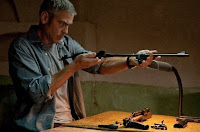 erican”
erican”
There are hundreds of ways to snark on a George Clooney movie, particularly “The American,” one of the finer ones in a strong career. There are the accusations of Antonioni-lite, or the humor to be found in Clooney finding another way to critique the American government in a movie that, superficially, seems apolitical. Or perhaps one can mock how Clooney’s head is so large that when he goes shirtless, he resembles a Bobblehead doll. But hey, we’re all adults here: “The American” is a smooth, intoxicating glass of mood, atmosphere and paranoia. The film begins somehow in media res, flipping the usual James Bond romantic getaway into another exercise in a restless ouroboros of pursuit and attack, and continues into a spiral of self-doubt, as our mysterious leading man desperately tries to understand a life doing anything else at all. But it’s not all bullets and brawn — witness in the push and pull of Clooney and the enchanting Violante Placido a romantic game of chicken between two career non-blinkers, unintentionally showcasing the human comedy in the refusal of lovers to communicate.
5. “Enter the Void”
I’m not going to start endorsing the gimmickry of 3D for everything, but if there was any film that deserved it in 2010, it would be Gaspar Noé’s emotional bulldozer of a film (with “Gulliver’s Travels” a close second, of course). The story, involving the unbreakable bond between a dead drug dealer and the sister he watches over, is only a vessel for Noe’s insane storytelling techniques, involving a camera that soars high over Tokyo, into every room of a crowded motel, and eventually inside the womb of an expectant mother. “Enter the Void” has a propulsive can’t-look-away quality that eliminates any judgment you may place on the film, consistently re-interpreting its own form and function without any acknowledgment of potential audience acceptance. It’s cinema as violation. This should be a genre.
4. “Scott Pilgrim vs. the World”
It’s easy to throw around terms like “the year’s most misunderstood movie” but it’s also easy to look askew at my fellow critics who seem too literal minded to appreciate the occasional metaphor or topical theme in any contemporary release. So a quick rundown: “Scott Pilgrim vs. the World” is not at all in any way a romance. You’re not meant to buy Scott and Knives Chau as a couple, and you’re supposed to be concerned about the viability of Scott and Ramona. Rather than celebrating the myopia of a particular kind of youth, ‘Pilgrim’ is about the character’s evolution. One of the biggest gambles in bringing the $60 million comic adaptation to the screen is allowing such a dim, unlikable, recognizably obnoxious protagonist to be the audience’s hero. Movie romance being what it is, ‘Pilgrim’ does the opposite of what’s expected, showcasing a guy who falls into a relationship of emotional convenience with Knives (rather than sexual convenience, Hollywood’s go-to), and then pursues another relationship without any intention of improving himself or another. It’s emotionally messy, even ugly, a fact the super duper special effects fight scenes are meant to ironically underline. As is, ‘Scott Pilgrim’ resonates not by being a love letter to Gen-Y slackers, but a genuine call to arms for maturity and adult responsibility. No wonder audiences hated it.
3. “White Material”
There’s a woozy disgust that is filtered through the opening of “White Material” that doesn’t subside for its entire runtime. It’s the intangible feeling of rotten alchemy, that someone, or something, is not where it belongs. In this case, the slow reveal is that the soft-skinned Isabelle Huppert, all long legs and summer dresses, is the head of a plantation in an unnamed African country, aware of a violent civil war that has torn relations apart, and threatens to boot her violently from the region. She insists on utilizing cheap labor to finish her work, unable to surrender to save herself or her loved ones despite her actions provoking an already tense situation. “White Material” is the angriest and most precise Clare Denis has been yet, with Huppert standing in as an incendiary audience surrogate, a passionately apolitical taskmaster who can’t see beyond her own meager achievements, and more importantly, can’t save her own life. Denis’ handle over the material wrings suspense from unlikely places, making “White Material” difficult viewing not only because of subject matter, but because of the violent inevitability of what’s to come.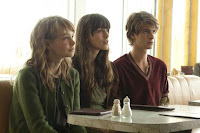
2. “Never Let Me Go”
“All bad movies are depressing, and no good movies are.” So goes the credo of Roger Ebert. And where was he when I wrestled with Mark Romanek’s adaptation of Kazuo Ishiguro’s dystopian science fiction story about three youths who learn that they have had their entire lives mapped out for them? After exiting the theater, I was left with a deep, profound depression that colored my outlook for days. Most people were turned off by the film due to an inability to accept the basic premise, which is rooted in the belief that our youths are spent understanding and memorizing unseen rules of life and basic, unshakable moral beliefs rooted in nothing but repetition and arbitrariness. I wondered if I found hope in the premise, and in fact I still do, which is why I haven’t been able to place the film at number one. And so much of the film still haunts me, from the children tittering over word of the arriving “bumper crop” to the unsettling realizations at a local travel agency, to Keira Knightley’s final, tragic words of regret. I imagine it’s a film I will continue unpacking long into the new year.
1. “Dogtooth”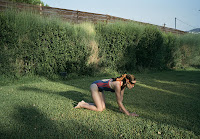
I sat at rapt attention watching Yorgos Lanthimos’ delicious black comedy last spring, feeling the rhythms, understanding the energy, laughing at all the right (wrong?) parts, what have you. But it took another audience member to allow me to fully appreciate the film. I almost jumped at her audible gasp, during a scene where the family eats dinner, and one girl asks for someone to pass the “telephone.” It was as if a bomb went off in her head, and I instinctually realized how cunning the picture was in playing with our tools of language to absorb and repel our everyday lives. “Dogtooth,” which apparently is receiving a fuller release next year, is a difficult picture to discuss, not because “spoilers” would retroactively taint the year’s most sinister picture, but because the shock and aggression of the film’s many surprises dovetail beautifully with the pregnant pauses used to illustrate, like “Never Let Me Go,” a life of unknown captivity. “Dogtooth” trumps that film not only in its wonderfully sadistic punchline, but in the darkly comic manner in which people react after staring into the abyss.
Movies To Love  In 2011:
In 2011:
I got more out of Jean-Luc Godard’s mischievous, incomprehensible “Film Socialisme” then its lead-in when it screened immediately after “The Social Network” at NYFF. “Uncle Boonmee Who Can Recall His Past Lives” is a touching, elegiac tale of accepting death as a passage to a new life. But, to be fair, the one 2011 release that I can’t get out of my head is gonzo horror picture “A Serbian Film,” which went to the absolute darkest places I have seen any movie in recent memory approach, all with a transgressive flair and a sly sense of humor that suggested that it probably (egads!) warrants two viewings. I will only grant it one.
Performance of the Year: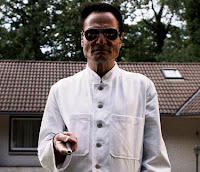
Dieter Laser, “The Human Centipede: First Sequence”
Director Tom Six has his hands full trying to find a suitable replacement for Laser in his next “Human Centipede” opus. Hollywood’s been desperately trying to find their next boogeyman, and in Dr. Heiter, they hit a home run. Part of this stems from the camera’s genuine love affair with Laser that makes even the disdainful way he consumes canned fruit a compelling cinematic act, but much of it comes from his expressive brow that leads the way in conveying joy, hatred, and utter insanity at the heart of Dr. Heiter’s menace. Despite the spliced genes of Udo Kier and Christopher Walken, Laser is a genuine find, and deserves at least a career on par with Peter Stormare.

Worst Performance of the Year:
Bill Camp, “Tamara Drewe“
I’ve learned that Bill Camp, who’s been in bit roles in several films from well-respected directors, is some sort of stage legend. Naturally, this does not come across in Stephen Frears’ graphic novel adaptation, as he’s utterly unlikable and altogether repellent in every scene he’s in. Not being familiar with the story, I was expecting him to be revealed as a pedophile, or perhaps take an errant bullet to the head in a colorful detour of the story. Alas, it turns out he is the most pure and incorruptible character in the entire piece, despite rattling off stories about his own obsession with Thomas Hardy that leave the other actors looking bored (but playing interested?). Again, not necessarily a reflection of Camp’s talent, but there was no actor as teeth-grittingly unbearable this year as Camp in “Tamara Drewe.”
Worst Movies of the Year:
Aside from the obvious deficiencies, midnight movie hit “Birdemic: Shock and Terror” was not the most irritating cinematic experience of the year. Nor were obvious hack jobs like “Jonah Hex” and “Grown Ups,” both of which felt edited with scotch tape. The least bearable cinematic experience had to be spending an afternoon with the untalented Henry Joost and Ariel Schulman and his gullible brother Nev as they proceeded to annihilate the house of cards that is one woman’s sad existence for the sake of telling us that, um, sometimes people aren’t what they say? Fucking revelatory. Thanks for the insight “Catfish.”
I Didn’t Get I t:
t:
I do think there needs to be more modesty in film criticism, as I would be impressed to meet the one film critic who can claim he or she “got” every film the saw in 2010. Such is my reaction to “Kick-Ass“: can someone explain to me what was being satirized here? I enjoyed Nicolas Cage‘s gonzo performance, and the unfiltered action sequences of the final half hour were some of the better example of on-screen violence this year outside of “The Good, the Bad, the Weird.” But what’s the joke? What’s the punchline? Is it a parody of the natural collateral damage superheroes leave in their wake, both emotional and literal? Is it mocking the superhero film, despite only cursory nods to the tired subgenre? What is the use of Ennio Morricone and the Banana Splits on the soundtrack meant to inform, beyond a sly wink to movies as a whole? What of our hero completely taking a backseat at the close of the narrative? I did not hate it, I did not particularly enjoy the entire experience, but everyone except for me seemed to have an opinion on this film. What was “Kick-Ass”?
